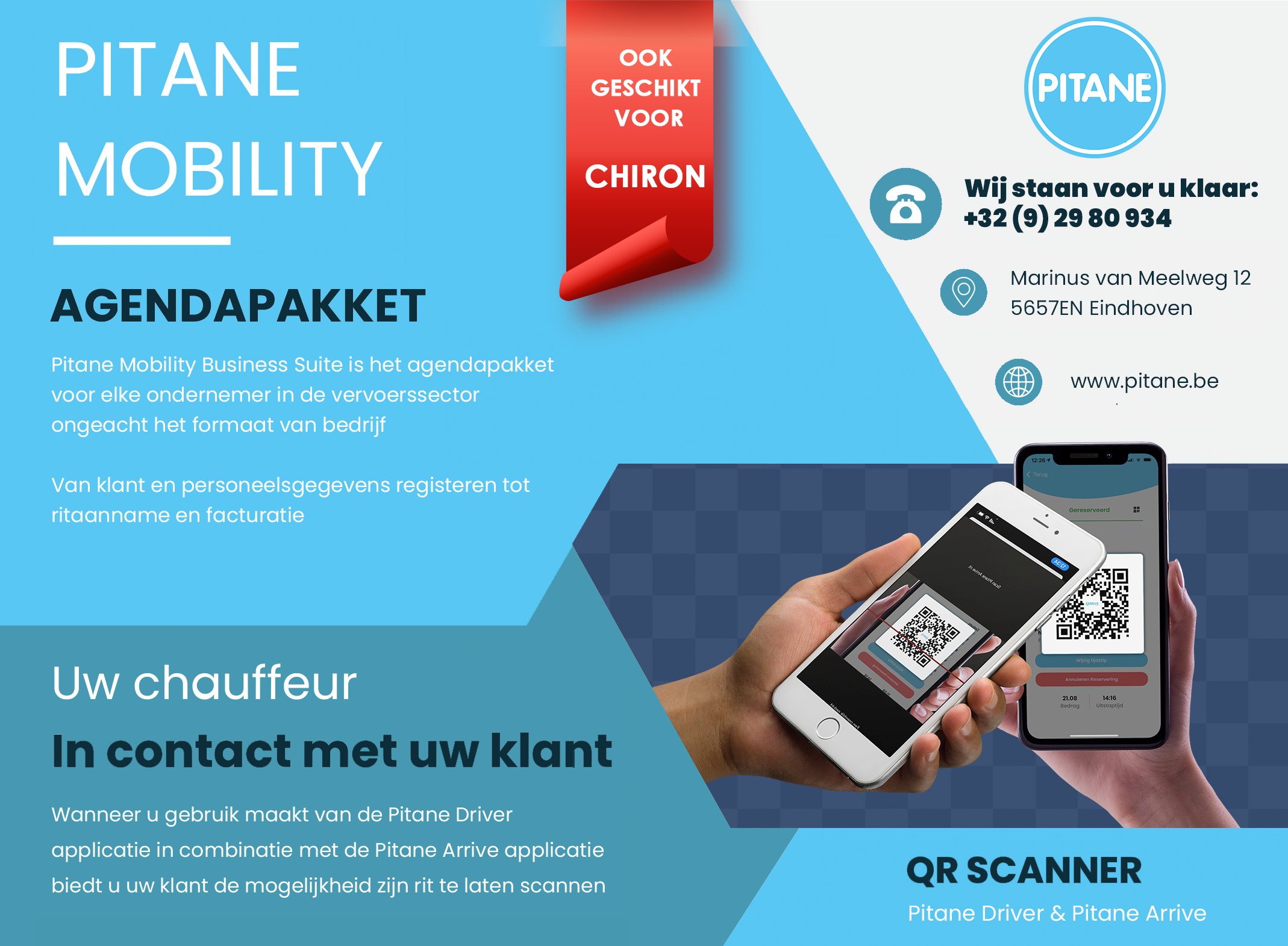Setting up an effective transport system is not only the responsibility of the carriers.
Transporting schoolchildren to different schools in different locations using minivans can be a complex logistical problem. We saw that last year. In any case, a lack of personnel and poor transport planning have ensured that the taxi sector came into disrepute. Grain for the mill of politicians in the opposition benches and aldermen who were called to account. In most cases, the carrier went unpunished, slightly damaged by the local media.
On the eve of the holiday period, we can take stock and make concrete plans on how we will approach the planning for the coming school year in the coming period. In any case, copying existing routes and schedules is a major fallacy. A new school year means taking a critical look at planning, staffing and cooperation with clients. The goal has not changed in recent times. Ensuring that all children arrive at their respective schools safely and on time, while keeping the occupancy rate of the minibuses as high as possible. This requires careful planning and coordination, as well as the use of modern technologies to optimize the process.

It is important to seek regular feedback from everyone involved, including the children, their parents, the drivers and the school staff.
The first thing to consider is the starting time of the schools. Given that start times vary between 8:00 AM and 8:45 AM, you might want to consider creating a structured schedule where children attending schools that start earlier are picked up first. After that, the children who go to schools that start later can be picked up. This can help to ensure that children are not picked up unnecessarily early and spend too long in the vans.
route planning software
Subsequently, the use of modern technologies such as route planning software can help to determine the most efficient routes for the minivans. This software can take into account various factors such as traffic information, the location of the schools and the children's homes, as well as the starting time of the schools. Using such technologies, an optimal route can be established that minimizes the time children spend in the vans while maximizing the occupancy rate of the vans.
In addition, we must ensure that we have flexible transport plans. This means back-up plans should be in place in case of unforeseen circumstances such as traffic accidents, bad weather or driver illness. This may include, for example, extra taxi vans on standby, or alternative routes that can be used if the normal route is not available.

There must be clear communication between the taxi drivers, the school authorities, the parents and the children. This can help avoid confusion and misunderstandings. For example, if there are changes to the pick-up time or route, this information must be communicated to all parties involved in a timely manner.
The goal is to ensure that all children arrive at school on time and safely, while keeping van occupancy rates as high as possible and minimizing the time travelers spend in the vans.
To further improve the efficiency of this process, different strategies can be applied. Instead of picking up children one by one, the starting point is to look for efficiency in clustering the travelers. This can be done more easily from the schools because there are then collection points. Going the other way requires more thinking and automatically assuming that the morning route must be driven in reverse in the afternoon is a structural fallacy of many planners. It is often the easiest way to compile routes manually.
The morning schedule is more complex. To reduce the total time children spend in the van, children who live closer to their school can be picked up later than children who live further away. This allows the children who have to spend longer in the van to be picked up later and thus minimize their time in the van.
predictions
Transport services must use real-time tracking technologies. These can enable parents, school administration and the transportation coordinator to track the location of the vans and accurately predict arrival times. This also helps identify problems on the route in real time, such as traffic congestion or delays, and can help you react quickly to these situations. It is essential to regularly review the overall system to identify any problems and implement possible improvements. This may include collecting and analyzing feedback from students, parents, schools and drivers.
Using an app or online platform can improve the process of coordination and communication. For example, parents can track the arrival time of the vans in real time, which helps them get their children to the pick-up points on time. In addition, such a platform can also be used to send notifications in case of schedule changes, delays or other problems.
The drivers play a crucial role in this system. They must be well trained, not only in driving skills and safety, but also in dealing with children and in crisis management. This helps them react better to unforeseen situations, and makes the children feel safe and comfortable during the ride.
occupation
If the eight-seater minivans are not always fully utilized, it may be more efficient to use smaller cars. This could lead to more routes but with a higher load factor, which could lead to greater efficiency in general. Clients must work closely with the transport companies. To increase efficiency, it can be helpful to encourage parents to participate in a carpool program. This could reduce the number of children that need to be transported by minibuses, reducing pressure on the service and improving efficiency.
Parents can also contribute to better planning. Reducing the number of stops can also contribute to transport efficiency. By minimizing the number of times the van has to stop to pick up children, we can reduce the total journey time. This could mean that children have to walk to a central pick-up point accompanied by parents, but it could reduce the total time they spend in the van. If there are several schools in the same area, it can be useful to work together and set up a common transport system. This could share costs and improve efficiency.

With advancing technology, the use of advanced data analytics and machine learning techniques can be helpful in improving the efficiency of bus routes. By collecting historical data on children's pick-up and drop-off times, traffic patterns, and even weather conditions, a model can be developed that predicts the most efficient routes and timetables.
starting times
While school start times are fixed, there may be flexibility in the bus schedule, especially for schools that start later. It may be possible to adjust the pick-up times based on the needs of the children and parents, maximizing the efficiency of the transport.
If the schools and collection points are not too far apart, it may be feasible to use alternative, environmentally friendly modes of transport, such as electric vans. This can contribute to the reduction of the ecological footprint of the transport system.
Transporting schoolchildren to different schools using minibus taxis is a challenging task that requires thorough planning, efficient coordination and effective communication. In addition to the regular planning, an emergency plan must also be drawn up. What happens if a van breaks down or a driver falls ill? Are spare vans or drivers available? What happens in extreme weather conditions? These questions must be answered in advance to ensure that service is interrupted as little as possible.




